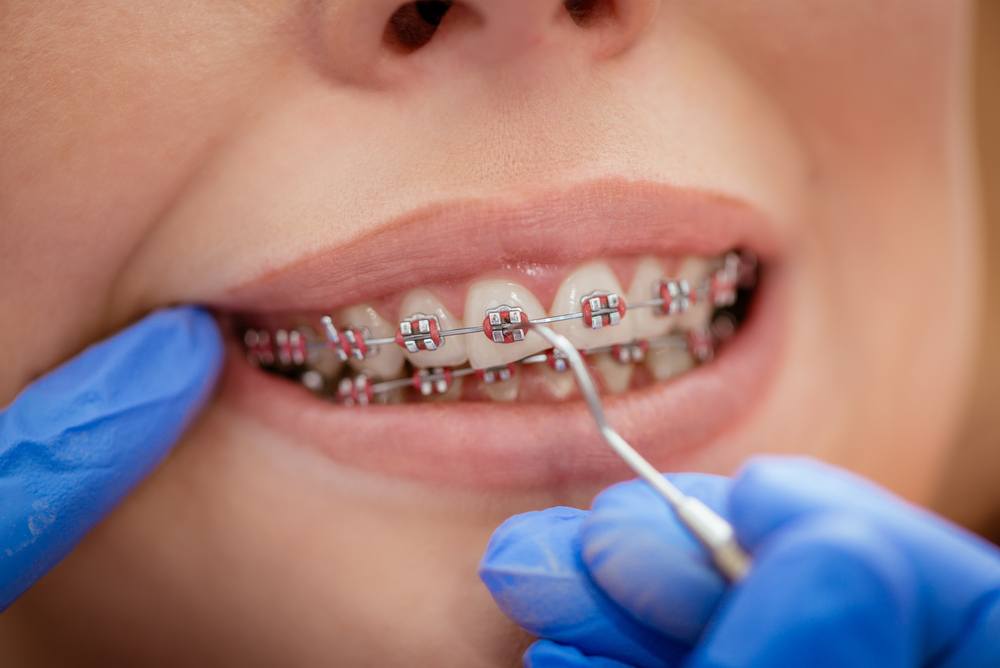Comprehensive Guide to Orthodontics Treatments for Fixing Dental Imbalances
In the realm of orthodontics, the journey to achieving a flawlessly aligned smile includes a myriad of treatments customized to remedy oral misalignments. From conventional braces to unnoticeable aligners and also surgical choices, the area of orthodontics provides a variety of services to deal with varying levels of dental irregularities. Comprehending the details of each procedure, including their mechanisms, advantages, and prospective drawbacks, is essential in making informed decisions concerning one's orthodontic treatment. As we navigate with the comprehensive overview to orthodontic procedures for correcting dental imbalances, the complex details of each technique will unravel, shedding light on the course towards a functional and harmonious dental positioning.
Orthodontic Procedures Overview

Along with traditional braces and clear aligners, orthodontists might likewise advise other treatments like headgear, palatal expanders, or retainers to resolve specific positioning problems (cumming orthodontics). These procedures are tailored per patient's special requirements and might entail a mix of therapies to accomplish the wanted outcomes. Regular modifications and tracking are crucial components of orthodontic treatment to ensure development gets on track and to make any kind of needed alterations in the process. By going through orthodontic treatments, individuals can not just attain a straighter grin yet also boost their overall oral wellness and feature.
Standard Braces: Exactly How They Work
When thinking about orthodontic treatments for dental misalignments, standard dental braces stand apart as a reliable method for remedying teeth placing. Standard dental braces include brackets, wires, and bands that work together to use continuous pressure on the teeth, slowly moving them right into the desired placement. The braces are connected to the teeth making use of a special adhesive, and the cords are threaded with the brackets. By changing the stress of the cables, orthodontists can manage the direction and pressure used to each tooth, directing them into appropriate alignment gradually.
As stress is used to the teeth with the braces, the bone bordering the teeth is improved to support the brand-new tooth settings. Individuals will certainly need normal changes at the orthodontist's office to ensure the braces continue to apply the correct stress for reliable teeth activity.
Undetectable Aligners: Cons and pros
These clear, customized trays are virtually undetectable when used, making them an attractive choice for individuals seeking a more cosmetically pleasing orthodontic treatment. Individuals can remove the aligners prior to eating or cleaning their teeth, decreasing the danger of food obtaining stuck in the device and streamlining the cleaning process.

Surgical Orthodontic Options
Surgical treatments in orthodontics existing viable alternatives for addressing complicated dental imbalances that may not be properly settled through standard orthodontic therapies. While undetectable aligners and traditional braces can fix numerous orthodontic issues, particular cases require surgical intervention to achieve optimal results. Surgical orthodontic alternatives are normally recommended for severe malocclusions, substantial jaw inconsistencies, and situations where the underlying bone framework needs alteration to attain appropriate alignment.
One usual medical orthodontic treatment is orthognathic surgical procedure, which involves rearranging the jaws to deal with useful concerns such as difficulty talking or eating. This surgical treatment is frequently executed in partnership with an orthodontist that helps line up the teeth prior to and after the procedure. Surgical orthodontics might also include procedures to expose impacted teeth, get rid of excess gum cells, or improve the jawbone to create a more unified facial profile.
Prior to thinking about surgical orthodontic choices, patients go through a thorough examination to determine the necessity and potential benefits of such treatments. cumming orthodontics. While surgical treatment may seem complicated, it can significantly improve both the function and visual appeals of the smile in situations where standard orthodontic therapies drop short
Retainers and Post-Treatment Care

Post-treatment care entails adhering to the orthodontist's directions diligently. This may include proper oral health methods, going to follow-up appointments, and wearing the retainers as suggested. Failing to follow post-treatment treatment guidelines can lead to relapse, where the teeth progressively relocate back towards their initial settings. Consistent retainer wear, good oral health, and normal dental check-ups are necessary for preserving the outcomes attained with orthodontic surgical treatment and guaranteeing the lasting security of the dealt with dental positioning.
Verdict
In verdict, orthodontic treatments supply numerous choices for remedying dental imbalances. Traditional dental braces make use of steel brackets and cords to move teeth into proper positioning. Unseen aligners offer a more very discreet alternative yet might not appropriate for all situations. Surgical orthodontic options are available for more extreme imbalances. Retainers are frequently utilized post-treatment to keep the brand-new alignment. In general, orthodontic procedures can effectively improve oral health and wellness and aesthetic appearance.
As we navigate with the detailed guide to orthodontic procedures for correcting dental misalignments, the elaborate information of each method will certainly unravel, dropping light on the course toward a harmonious and useful dental placement. - cumming orthodontics
One of the most common orthodontic treatments is the usage of braces, which are composed of steel braces and wires that use gentle stress to gradually move teeth right into the preferred setting.When thinking about orthodontic therapies for oral misalignments, typical dental braces stand out as a reliable technique for remedying teeth positioning. Additionally, invisible aligners may not be ideal for complex orthodontic issues that require even more considerable teeth movement, as they are commonly advised internet for mild to moderate situations. Retainers are customized orthodontic devices created to hold teeth in cavity their remedied positions after the completion of orthodontic therapy.